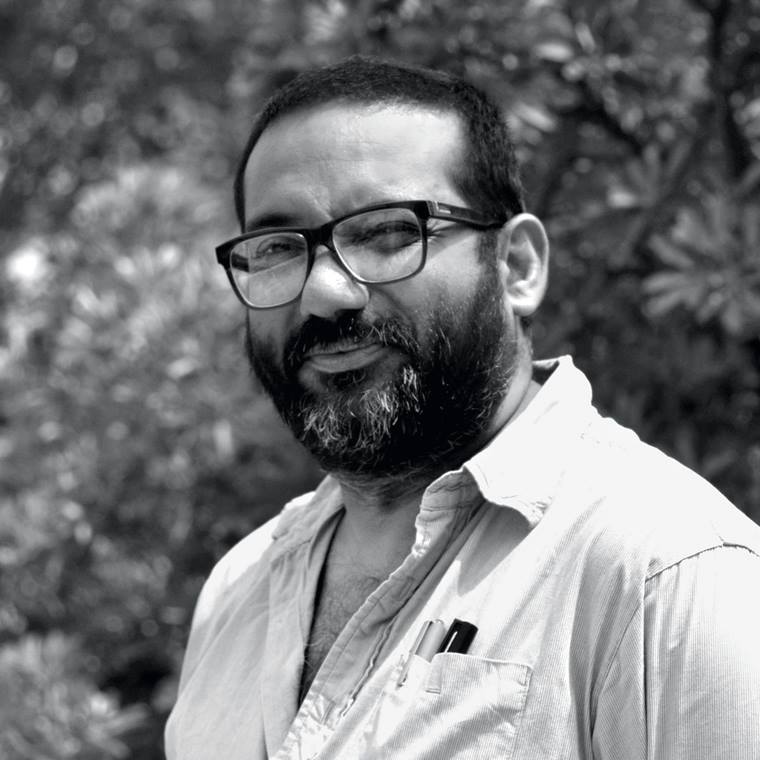She was an Indian artist, sculpture, and writer. She is known for bringing modernity and freshness to ancient Bengali sculpting art. Her sculptures were heavily influenced by the Dhokra method of Bastar Chhattisgarh. She was awarded Padma Shri in 1992 by the Government of India.
She was born in Kolkata in 1923. At age 14, she started studying art at the Oriental Art School used to run by Abanindranath Tagore. She lived at the Indian Society of Oriental Art till her marriage in 1941. The marriage was short-lived and after divorce, she resumed her art studies in Government College of Art and Craft, Kolkata, and then in Delhi Polytechnic, Delhi. There she secured a diploma in painting, graphics, and sculptures.

She worked with the Dhokra sculptors of Bastar, Chhattisgarh. Working there as an apprentice and learned the Dhokra method of sculptures also known as the lost wax method or the cire perdue. Here, she innovated her own method of bronze casting which involved sculpting in wax and then adding surface decoration using strips and rolls. This new method helps the end product appear delicate, organic, and malleable giving a rhythm to the work.
The subjects of her sculptures were the common man, fisherman, women stitching, laborers, and other working people. We also found nature, music, Bengali calligraphy, and historical figures in her works. Her sculptures have spiritual and emotional depths. They are freely reaching beyond quotidian and celebrating humanism.
Works and Exhibitions
In 1951, she assisted Alffandi, an Indonesian artist, during his visit to Shantiniketan. After her first solo exhibition in 1952, she was awarded Indo-German Fellowship in 1953 to sharpen her skill at the Academy of Fine Arts, Munich. There she worked under Heinrich Kirchner and Toni Stadler. Heinrich supported her in the transition from a painter to a sculpture.
In 1957, she returned to India and took a job as an art teacher at Dowhill School, Kurseong where is stayed till 1959. After that, she moved to Pratt Memorial School, Kolkata where she taught for one year before resigning in 1960.
When she was in India she was commissioned by the ASI (Anthropological Survey of India) to document the craft practices of metal-craftsmen in Central India. She worked as a Senior Research Fellowship at the ASI and conducted surveys on metals craftsmen across India and Nepal. While traveling a lot in the different parts of India discovering new techniques of crafts she became one of the promoters of ‘Living Traditions’ with Prabash Sen and Kamaladevi Chattopadhyay. Her projects and documentation turned her into an art anthropologist.
During the 1970s & 80s, she started exhibiting her works at Kolkata, Delhi, Germany, UK, and Japan. Her works have featured in many international auctions such as Christie’s and Invaluable.
Honors
In 1968, she was awarded Press Award for the Master Craftsman from the President of India. She received the Excellence Award from Kolkata Ladies’ Study Group in 1976. The government of West Bengal awarded her Abanindra prize in 1981. She held a fellowship from the Ministry of culture from 1984 to 1986. In 1992, she was awarded Padma Shri.
Books
- Little Flower Shefali and Other Stories.
- Kalo and the Koel
- Little Flower Shefali and Other Stories
- Metal Craftsmen in India
- Metal Craft in India
- In Search of Viswakarma
- Folk Metal Craft of Eastern India

Vikash Kalra is a self-taught artist & writer based in New Delhi whose work has been exhibited across India and is held in several private and corporate collections.
https://www.vikashkalra.com/web/

Leave a Reply